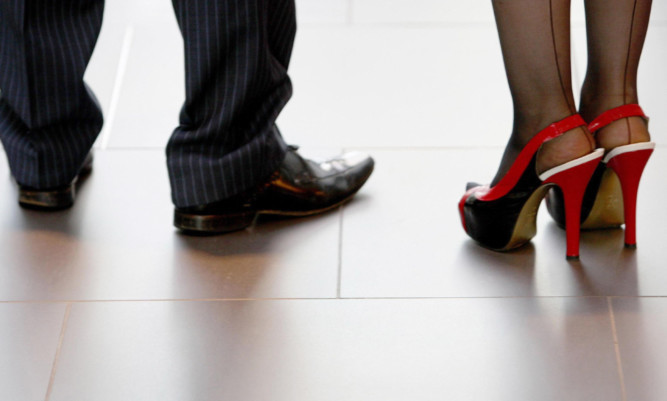A staggering pay gap between men and women working in Courier Country has been revealed by new figures.
The average woman takes home around £100 less per week than the average man across the area, according to 2014 figures by the National Office of Statistics.
Perth and Kinross and Angus areas have the starkest gender pay divide of £120.30, while the gap in Fife is £106.40 and Dundee is £96.50.
Weekly earnings for women vary from £410.20 in Perth and Kinross, the fifth lowest wage in all 32 local authority areas to £452.70 in Fife.
Dundee (£419.90) and Angus (£426) are also on the low end of the pay scale, coming 9th and 10th from the bottom respectively.
The highest paid women are in East Renfrewshire, where the weekly average is £608.40, while the Orkney Islands are in last place with £356.60.
The Close the Gap organisation, which works across Scotland with employers and employees to encourage and enable action to address the gender pay gap, said the gap in Scotland was still “stubbornly high” at 11.5%.
TUC economist Stephen Boyd said the situation is “poor and pretty unacceptable”.
He said: “It is not particularly surprising, unfortunately, as it is a long standing problem. Women are treated differently when it comes to things like maternity leave.”
He added while the overall picture is that the gap is closing, he was “very cautious” about calling it a downward trend.
He said: “The stats have come down a little bit this year which is good but we have to be cautious about thinking that it is a downward trend.
“What is interesting is that when we look at the statistics by age, the 29-39 age group women seem to be doing better, then when older women get hit by the maternity they lose out big time.”
In its latest Annual Survey of Hours and Earnings (ASHE) report, the Office of National Statistics concluded that despite the wide divide, the overall picture across the UK shows the gender pay gap is closing.
The report said: “The gender pay gap, based on median hourly earnings excluding overtime, has narrowed for full-time employees, to 9.4% compared with 10.0% in 2013.
“This is the lowest since records began in 1997, and despite a relatively large increase between 2012 and 2013, there is an overall downward trend, from 17.4% in 1997.
“The gap for all employees (full-time and part-time) was also the lowest on record at 19.1%, down from 19.8% in 2013. The gap has also decreased in the long-term, from 27.5% in 1997.”
Dundee City Councillor Lesley Brennan, an economist, said there are a number of factors affecting women’s pay equality.
She said: “The gender pay gap can be attributed to a host of factors. Women’s work can be undervalued and therefore lower paid.
“Women generally carry out the majority of unpaid care for their families, which can mean choosing part-time work to balance their work and care commitments. To help close the gap, low-paid work needs to pay better, and more flexibility in working practices is needed for working mothers.”
